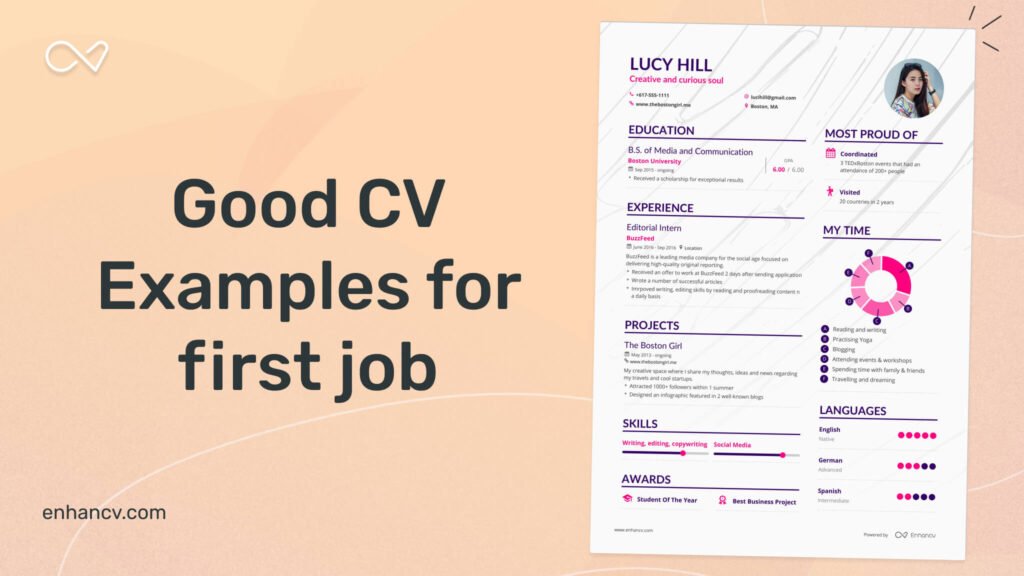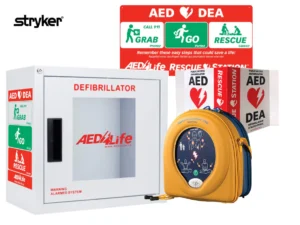
Create a CV for Your First Job
Getting ready to apply for your first job can feel overwhelming, especially when it comes to creating a CV. It’s the first impression you give to potential employers, so making it shine is crucial. Here’s a simple guide to help you create a CV that stands out and increases your chances of landing your first job.
1. Use a CV Template for Guidance
If you’re not sure where to begin, a CV for first job template can be a lifesaver. Templates outline what information to include and how to structure it. They also save you time and stress.
Using a ‘CV for the first job template’ can make the process much easier, especially if you feel unsure about where to start. Templates guide you on what information to include and how to format it well.
2. Start with Your Personal Details
At the top of your CV, list your name, phone number, email address, and LinkedIn profile (if you have one). This makes it easy for employers to get in touch with you.
Make sure your email address is professional. If you’re still using an old, quirky one, create a new one specifically for job applications.
3. Write a Strong Career Objective
Since you’re applying for your first job, a career objective helps communicate your goals and enthusiasm. Keep it short and focused on what you hope to achieve in the role and how you can contribute to the company.
Example: “Motivated and hardworking high school graduate eager to apply communication and teamwork skills to a customer service role. Passionate about providing excellent customer experiences.”
4. Highlight Your Education and Achievements
Since you likely have limited work experience, focus on your education. Mention your school, the years you attended, and any achievements or awards you received. Include relevant coursework if it aligns with the job you’re applying for.
A ‘CV for the first job template’ usually includes sections for personal information, a career objective, education, skills, and any relevant activities. Fill out each part thoughtfully to make a great first impression.
5. Focus on Your Skills
Make a list of skills that are valuable for the job you’re applying to. These could be soft skills like communication and problem-solving or hard skills like coding or proficiency in Microsoft Office. Use the job description as a guide to tailor this section.
6. Add Volunteer Work, Internships, or Project
Employers understand that you may not have much work experience. Instead, you can list volunteer work, school projects, or internships that have helped you develop useful skills.
When working on a ‘CV for the first job template,’ remember to highlight any volunteer work or school projects. Employers want to see that you have valuable skills, even if you haven’t had formal work experience.
7. Keep It Clean and Easy to Read
Your CV should be neat and easy to read. Use a simple font like Arial or Times New Roman and ensure your formatting is consistent throughout. Avoid long paragraphs and break information into bullet points.
8. Make It Interactive with QR Codes
Adding QR codes to your CV can be a unique touch. If you have an online portfolio, a LinkedIn profile, or examples of your work, creating QR codes can make accessing this information easier for employers.
Creating QR codes to include in your CV is straightforward. There are free tools online where you can generate QR codes that link to your online profiles or samples of your work. Make sure to test the QR codes to ensure they work.
Adding a modern touch to your CV can make a difference. For example, consider creating QR codes that link to your portfolio or LinkedIn profile. It’s a simple way to show you’re tech-savvy and organized.
Integrating QR codes into your CV can make your application more interactive. It shows employers that you’ve put in extra effort and allows them to easily access your work.
9. Proofread Before Sending
Spelling or grammatical errors can make a bad impression. Carefully proofread your CV before you send it out. It’s also helpful to ask a friend or family member to review it for any mistakes you might have missed.
Final Thoughts
Creating a CV for your first job doesn’t have to be stressful. Using a CV for the first job template, highlighting your skills, and adding a personal touch like QR codes can make your CV stand out. Take your time, be thoughtful, and be ready to impress potential employers.






